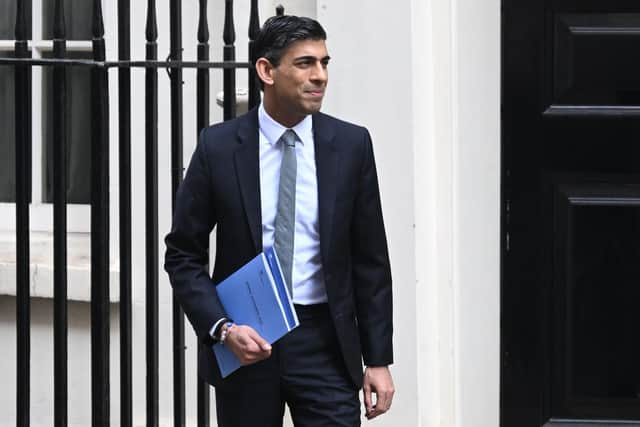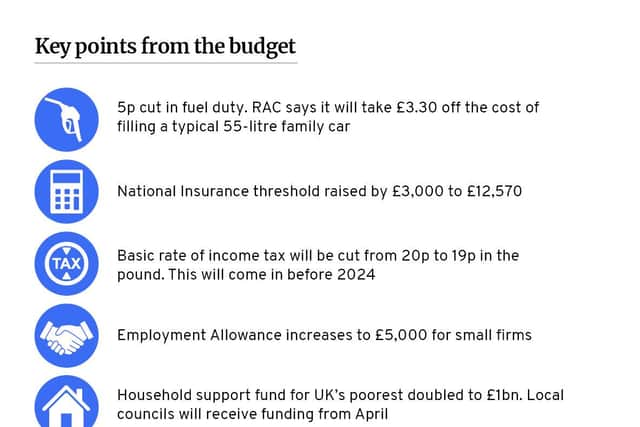Spring statement 2022: Why Rishi Sunak's package was 'disingenuous' and will be judged as 'austerity by stealth'
The Chancellor clearly wasn’t keen either, speaking for less than half an hour, five minutes of which was on Ukraine.
However, we did get an insight into the Chancellor’s and the Prime Minister’s priorities in these turbulent times, as shown through the choices they made on the day.
Advertisement
Hide AdAdvertisement
Hide AdFirst, the good news. There are considerably more tax revenues available than had been expected, due to higher inflation and a variety of other reasons.


So the Chancellor had money to play with.
His biggest decision was, as far as possible, not to spend it.
A little went on help with higher energy costs, and some had to be spent on higher debt financing costs, but the remainder went
on reducing government borrowing and/or tax cuts.


One negative implication of such a set of choices is that public service budgets have not been topped up to compensate for higher inflation, which means that they will buy less.
In other words the Chancellor chose ‘more resilient public finances’ over ‘more resilient public services’.
This will be a worry for public sector employees looking to wage settlements to help meet inflationary pressures and it is not a great look when the negative impacts of Covid on teaching and the health service are still being felt.
Claims of ‘austerity by stealth’ will doubtless follow.
The Autumn Budget will determine whether such an approach is sustainable.
Meanwhile, most of the help with higher energy costs was not targeted at the poorest households, but instead distributed widely, perhaps with an eye to coming local elections.
Advertisement
Hide AdAdvertisement
Hide AdNeither did pensioners or those on benefits receive any of the relief they were hoping for with respect to improved up-ratings in April.
Even with some government support, average living standards are set to fall by over 2 per cent in 2022/23 – their largest fall on record – and not recover their pre-pandemic level until 2024/25.
Tax-wise the Spring Statement was somewhere between rambling and disingenuous.
It is essential, apparently, that the health and social care levy related National Insurance rises go ahead, but at the same time thresholds can be raised, which reduces revenues.
The link was always tenuous, now it is near non-existent.
This change, combined with the income tax cut in 2024, means the Chancellor’s decisions have undone just over a quarter of the personal tax rises he announced last year.
If he and the Prime Minister have a grand scheme in mind, it is difficult to work out what it is and, crucially, how to plan for it.
All this leaves the Scottish Government, with its Spending Review due in May, facing some tricky decisions of its own.
Does it raise taxes to compensate the areas that have lost out to higher inflation, like benefits and public services?
Advertisement
Hide AdAdvertisement
Hide AdDoes it target support more towards poorer households, as has been widely called for? How does it approach the energy supply issues thrown up by the situation in Ukraine? And whither its Green partner in all of this?
May is unlikely to be a good time to publish a Spending Review, but then, these days, when is?
- John McLaren is an independent economist at the Scottish Trends website, scottishtrends.co.uk.
Comments
Want to join the conversation? Please or to comment on this article.